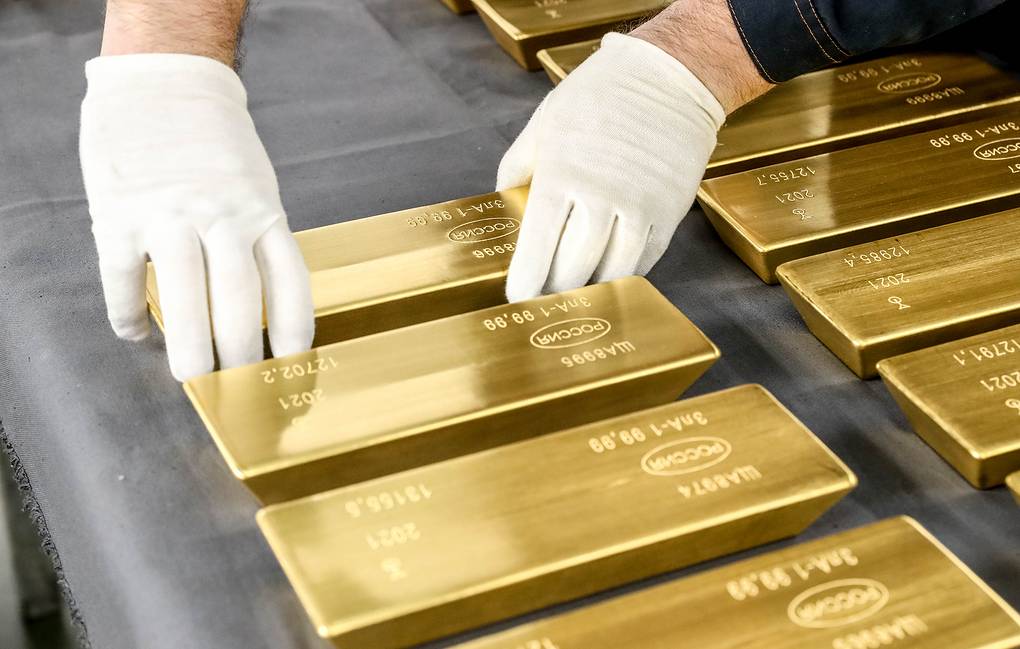From a peak of nearly $4,400/ounce in October, gold has plummeted below $4,000 and continued to fluctuate in the $3,900-4,050/ounce range. The 7.4% decrease in the past month is enough for many investors to consider whether to bottom out or take profits?
In that context, Goldman Sachs maintains its forecast of gold prices reaching $4,900/ounce by the end of 2026. According to this bank, the current fluctuations are just a "match" on the precious metal's upward path, when the biggest unchanged driver is persistent buying from central banks.
The US economy has many cracks - gold benefits
2025 marks a spectacular gold price increase of 53.9%, after bond yields decreased and the USD weakened. Although the US economy is still growing positively, the labor market shows signs of decline: New jobs decreased, job losses increased sharply and the unemployment rate increased to 4.3% in August - the highest level since 2021.
In addition, President Donald Trump's tax strategy has pushed up import costs, contributing to the increase in inflation from 2.3% in April to 3% in September.
This puts the US Federal Reserve (Fed) in a difficult position as the dual tasks - controlling inflation and supporting jobs - are conflictive.
Finally, the Fed was forced to cut interest rates at two meetings in September and October and is expected to continue to ease in 2026.
The spillover effect caused the 10-year bond yield to slide from 4.77% at the beginning of the year to 4.14%, while the Dollar Index decreased from 109 to 99.5. With the contrasting correlation between gold - yields - USD, this picture has created favorable conditions for gold prices to peak.
The center of power is in central banks
The recent correction comes as yields rebounded slightly and the US dollar recovered 1% over the past month. However, Goldman Sachs insists the fundamentals are still leaning towards gold's upward trend.
According to the report sent to customers, the leap of more than 25 USD in the morning session of November 10 in Asia "casked a clear mark of central bank purchasing power".

Goldman Sachs data estimates central bank gold purchases in September at 64 tonnes, three times higher than in August. Qatar is said to have purchased 20 tons, Oman 7 tons and China 15 tons.
Goldman Sachs forecasts that from the fourth quarter of 2025 to the end of 2026, central banks will maintain an average buying rate of 80 tons of gold per month. This is considered a long-term trend as many countries want to diversify reserves, reduce dependence on the USD and prevent geopolitical risks.
Not only the central banking group, gold ETF capital flows in the West also unexpectedly increased sharply, recording 112 tons in the most recent month - the highest level since mid-2022. The increase in buying pressure of ETFs and central banks is an unprecedented phenomenon in this cycle.
From the above factors, Goldman Sachs affirmed that it will steadfastly forecast gold prices to reach 4,900 USD/ounce by the end of 2026, while emphasizing that this figure could be higher if individual investors continue to increase the proportion of gold in the portfolio.
The world gold price at 19:21 on November 18, Vietnam time, was trading at 4,041.58 USD/ounce.
Regarding domestic gold prices, SJC gold bar prices are trading around 147.8 - 149.3 million VND/tael. Bao Tin Minh Chau 9999 gold ring price is trading around 146.8 - 149.8 million VND/tael.
Long-term support factors for gold remain
Mr. Edward Meir - an analyst at Marex commented that the increase in the USD and the reduction of speculative positions last week have created pressure for the gold market to enter a sideways period. The US dollar index's steady momentum after a strong increase also makes gold more expensive for investors holding other currencies.
The probability of the Fed cutting interest rates sharply overnight puts significant pressure on gold investment demand. However, ANZ Bank believes that long-term support factors remain, including geopolitical instability, concerns about US public debt, de-dollarization trends and gold purchases by central banks.











